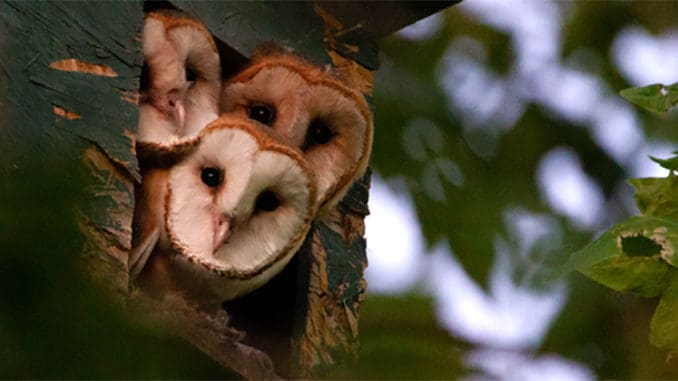
New Tool and Companion Resources
This month, we will release our extensive Habitat Assessment and Native Plant Tool, as well as a companion guide and resources that will help farmers choose native plants to support beneficial birds. The tool helps quantify habitat areas and management strategies, and prioritizes practices to support beneficial birds on different areas of the farm. WFA staff will demonstrate the tool at a webinar THIS WEDNESDAY, September 28th. The tool and resources will be available on our website by the end of the week. We will also email them to anyone who registers for the webinar.
Register for the Demonstration Webinar Here

Fall is Best for Cleaning Barn Owl Boxes
Barn Owls lay eggs in late winter or early spring, so the best time to clean out Barn Owl nest boxes is the fall. With a long nestling period of about 65 days, you risk disturbing nests or making your boxes less attractive to owls seeking nesting if you wait until spring to do your cleaning. This recommendation comes from a recently published paper in the Journal of Wildlife Management, authored by WFA partners Ryan Bourbour and Breanna Martinico of UC Davis.
After eggs hatch, nestlings spend their early days eating and living in the nest boxes until they are able to leave the nest. As many as five or six nestlings are typically in a box, and they eat up to four or five rodents each day. Nestlings swallow their prey whole, and what isn’t digested—fur and bones—is coughed up in round or oval-like pellets.
“They’re in there for seven to eight weeks just regurgitating these pellets,” says Ryan Bourbour.” A lot of pellets pile up over the course of a breeding season and a lot of these boxes need to be cleaned out.”
Read more here

WFA Remembers Dave Foreman
We were deeply saddened to learn that Dave Foreman, founder of The Rewilding Institute, recently passed away. Dave was a member of Wild Farm Alliance’s Advisory Board and coined the term “rewilding” in 1992 for a movement to protect and restore wild nature.
Dave was involved with the work of WFA from the start. At our first big event in the early 2000s, he spoke about how wilderness had a right to exist of its own volition, and that it comes from an old English word wildeor-ness, which means self-willed land. He urged the audience to take steps to keep it wild and even got us all to howl like a wolf at the end of this talk - a signature closing to many of his inspiring talks.
More recently I was lucky to be at a small gathering around a campfire where he shared his ongoing conversation with the local Chickadees around his home. He was at once in wonder and respectful of them, and eager to share their teachings of what they and the wild need. I howl as I write this to honor and celebrate Dave as one of the greatest conservationists ever and an important advisor to the work of WFA.

Funding for Climate Smart Agriculture, Healthy Soils & More in California
California’s 2022 budget was recently finalized with significant investments in climate friendly agriculture, soil health and so much more. The $477 million for fiscal year 2022-2023 is a tremendous investment in the state’s farmers and food system. For the last four years, WFA has been involved with the Healthy Soils Program, which was just funded with $85 million, helping growers get funds for practices such as hedgerows, riparian buffers, cover crops and more. We look forward to continuing to help growers access these funds and to see more of these conservation practices implemented on the ground.
Read More from CalCAN

Early Bird Registration for EcoFarm 2023 Open
Through its connective events, the Ecological Farming Association (EcoFarm) facilitates an exchange of knowledge and resources among a diversity of stakeholders and grassroots leadership to advance just and ecological farming and food systems.
After two consecutive years of hosting this conference virtually, they are bringing people back together again in person. WFA will be there presenting in one workshop on How to Support Beneficial Birds with Native Plants that they Prefer, and moderating two others: Land Repurposing in the Central Valley and What to Look for in a Good PCA and How Can We Support More of Them. Join WFA at EcoFarm Conference 2023! Early bird registration is now open. Hope to see you in January!
Register Here
|










